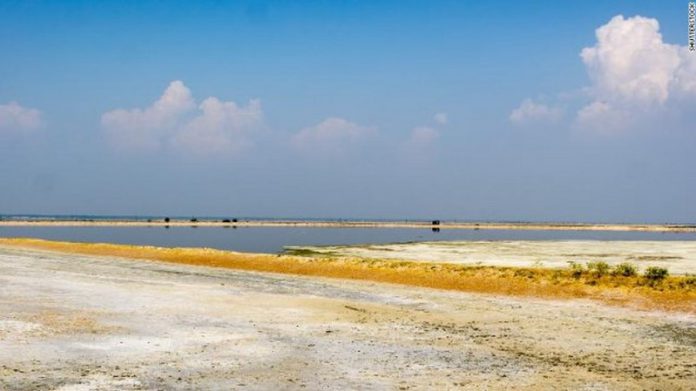It’s a mystery that has baffled officials in India. What killed more than 2,000 birds near the country’s largest inland lake?
Locals spotted the carcasses on Sunday along the shores of Sambhar Salt Lake in the northwestern state of Rajasthan, Arun Prasad, the state’s Chief Conservator of Forests, told CNN Wednesday.
They alerted state forest officials who found around 2,400 dead birds — including 20 migratory species that flock to the lake each year.
“The migratory birds travel along a path known as the Central Asian Flyway, which covers regions like Siberia, Mongolia, Iran and Afghanistan,” Prasad said.
Images published by CNN affiliate News18 showed bird carcasses scattered over a large area beside the lake, which covers an area of 190 square kilometers (73 square miles) at full capacity.
So far, wildlife authorities haven’t established the cause of the deaths. But one possibility is high saline and alkaline levels in the water, in an area where salt is manufactured, according to Ashutosh Arora, a senior official in the state’s Animal Husbandry Department.
The samples have been sent for analysis, said Ashok Sharma, joint director of the State Disease Diagnostic Center. “At this moment we suspect that there was some level of toxicity and high level of salinity in the drinking water — we will have more details once the report comes from Bhopal,” said Sharma.
The lake is considered too salty for many species, but local tourism sites say it’s a popular gathering place for flamingos, storks, sandpipers, redshanks, black-winged stilts, coots, and shovelers.
It’s not clear which species died. Photos showed workers collecting the carcasses in the back of a truck and burying them in a large pit.
Officials have collected some bird carcasses and water samples and sent them to a pathology lab in central Madhya Pradesh state to be examined, Prasad said. He expects to get results back over the weekend.
Prasad said the mass deaths were unlikely to be due to disease because local birds were continuing to forage at nearby water bodies and wetlands.
“We believe it could be local weather conditions or water contamination,” he said.

